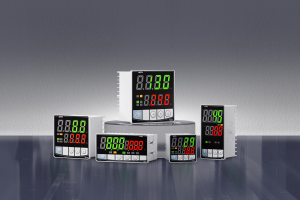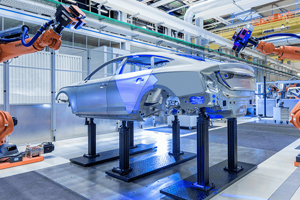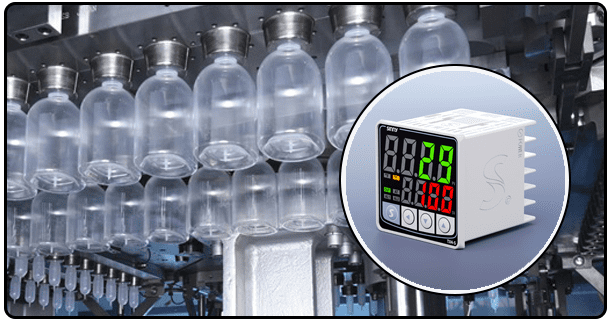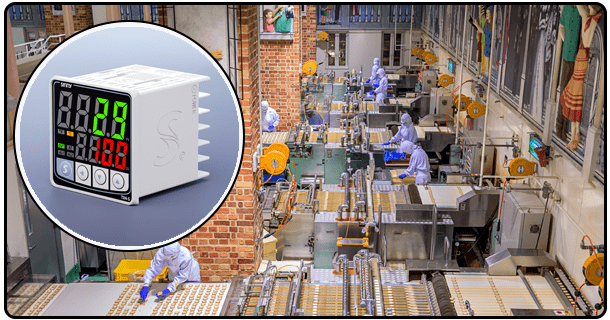Using PID controllers to control temperature: precision and reliability in industrial processes
1. Introduction
In many industrial processes, temperature control is essential to maintain system efficiency and ensure optimal production conditions. PID (Proportional-Integral-Derivative) controllers play a crucial role in achieving precise temperature regulation. The article discusses the implementation and design of PID temperature controllers, emphasizing their importance, design methods, and practical application.
Basics on PID controllers
The PID control system is a feedback-based loop that maintains the setpoint. The controller consists of 3 components.
Proportional: The component that produces output proportional to current error values, or the difference between setpoint and process variables.
Integral: The component that integrates past errors in order to remove the steady-state residual error.
Derived (D): The component that predicts the future error based on changes in the process variables.
PID controls adjust the input control to reduce the error and provide a stable, balanced response.
2. Mathematical Modelling of Temperature Control System
A PID controller is designed by first mathematically modeling the system of temperature regulation. The transfer function represents the dynamics of the system. Consider, for example, an oven where temperature TT can be controlled. You can derive the transfer function from the heat transfer equations, and the thermal properties of the system.
Designing PID controller
The design of a PID control involves several steps.
Identification of the System: Determine the parameters for the system and create the transfer function.
Tuning the controller: Find the best values for the PID parameter (Kp Ki Kd). There are several tuning methods available.
Ziegler Nichols Method: An heuristic tuning method.
Cohen Coon method: A suitable method for first order processes with delays.
Auto Tuning: Most modern controllers have auto-tuning functions that adjust parameters automatically.
Testing and Simulation: Test the controller through simulations and in-real world testing.
Implementation of PID controllers
Hardware and software are required to implement a PID control:
Hardware Includes temperature sensors, control actuators, and a PID controller.
Software:Involves integrating the controller algorithm with the hardware and programming it.
Considerations for practical considerations are ensuring compatibility between sensors and actuators. Noise in measurement is also addressed, as well as safety measures.
3. Case Studies and Applications
The PID controller is widely used in many industries.
Production: Assuring consistency of product quality through precise temperature control in extrusion, molding and other processes.
HVAC System: Regulating temperatures for maximum comfort and efficiency in buildings.
Chemical processing: Controlling reactions temperatures to ensure quality and safety.
A PID controller, for example, can adjust the flow rate of the heating medium to maintain the desired temperature at the outlet in a system with a heat-exchanger.
4. Limitations and advantages of PID controllers
The PID controllers have several advantages:
Accuracy These devices provide accurate control and reduce errors.
Simplicity Control algorithm is simple and straightforward.
Flexibility These can be used for a variety of different processes.
There are limitations.
Tuning complexity: Finding optimal parameters is a challenge.
Performance Issues PID controllers can perform poorly in systems that have significant delays and non-linearity.
Future Trends of PID Control
As technology advances, the field of PID controls is also evolving.
PID Adaptive Controllers: This controller adjusts its parameters in real time based on the changing conditions of the process.
AI Integration: Combining artificial intelligence with PID controls to improve performance.
IoT & Industry 4.0: Leveraging Internet of Things to allow remote monitoring and controlling of PID Systems.
Conclusion: The design of PID temperature controllers is critical to ensuring reliable and efficient industrial processes. Understanding the fundamentals, creating accurate models and using appropriate tuning techniques can help achieve precision temperature regulation. The future of PID controls is exciting as technology continues to advance. It offers new possibilities in terms of performance and integration.
5. Meta description
Learn about the PID temperature controllers and their design. Discover their importance, design methods, and practical application to achieve accurate temperature regulation in industrial process.
- PID Control Temperature Example: Comprehensive Guide
- Control PID de Temperatura Omega: Precision y Eficiencia en el Control de Temperatura























